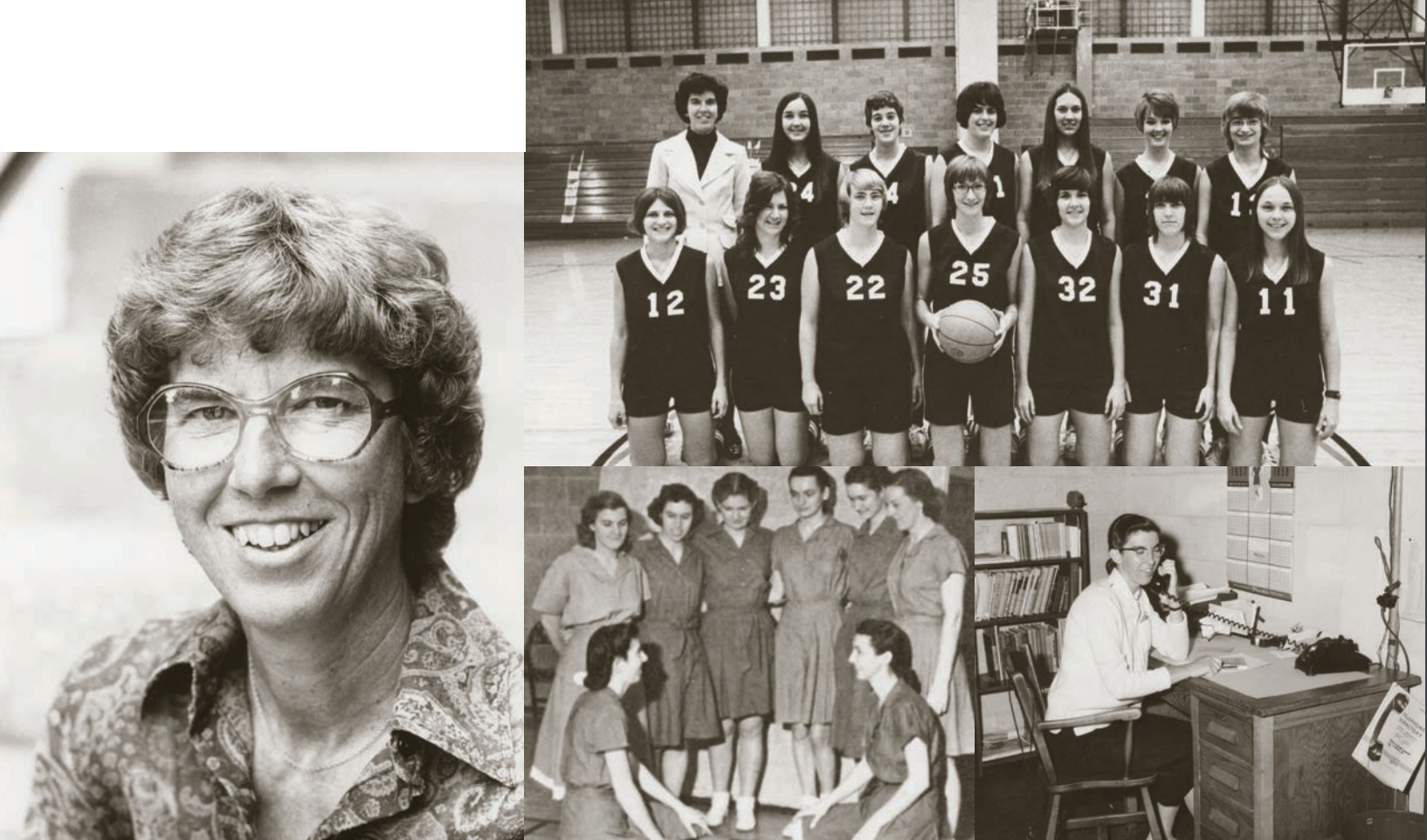Ruth E. Gunden ’52: ‘You have to play to improve’

This article originally appeared in the Spring/Summer 2022 issue of The Bulletin.
BY JOE SPRINGER ’80, curator, Mennonite Historical Library
“Conned” by five older brothers into learning to catch and throw, Ruth E. Gunden ’52, professor of physical education from 1953 to 1994, spent much of her nine decades practicing and promoting the “joys of movement.”
In the 1950s intercollegiate athletic opportunities for women were few, and in Indiana, practically nonexistent. As Goshen College’s men’s athletic teams of the era were striving for permission to join established regional and state intercollegiate associations, Gunden positioned the college to become charter members of similar groups that finally emerged for women. “You have to play to improve,” Gunden would say, busily promoting every available intramural and extramural possibility. Invitational “sports or play days” had GC’s women’s teams competing on equal footing with teams large and small. Similar matches continued as intercollegiate play became formalized. GC women played Indiana University, Purdue University (whom they beat three times in 1973-74 in basketball) and The Ohio State University.
Well before the 1972 enactment of Title IX — celebrating its 50th anniversary this year — Gunden had secured the role of women in GC’s physical education curriculum and athletic philosophy. Parity of budgets and the number of intercollegiate sports offered would require additional work and time.




